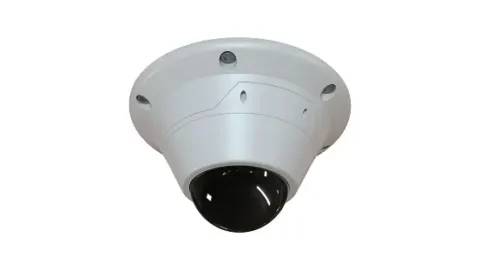Choosing the right debt collection software can be a game-changer for your business. It helps you manage outstanding debts more efficiently, keeps track of payments, and ensures smoother communication with your clients. But with so many options out there, how do you know which one is right for you?
In this article, we’ll walk you through the ultimate checklist to help you find the best debt collection software for your needs. From essential features to consider, like user-friendliness and integration capabilities, to understanding the importance of security and customer support, we’ve got you covered. By the end, you’ll be equipped with all the knowledge you need to make a smart and confident decision.
What is Debt Collection Software?
Debt collection software is a type of financial management software designed to streamline and automate the process of recovering overdue debts. It helps businesses manage their debt collection operations more efficiently, reducing manual tasks and improving communication with debtors. This software typically includes features such as debtor tracking, automated communication, payment scheduling, and analytics to enhance efficiency and effectiveness in debt recovery.
It is used by collection agencies, lenders, and businesses to recover outstanding payments. It automates tasks such as tracking debtor accounts, communication, debtor scoring, and scheduling payments, enhancing efficiency and compliance. The software helps maximize collections while reducing operational costs. It also provides advanced analytics and reporting capabilities to help businesses make strategic decisions about their debt recovery strategies.
Benefits of Using Debt Collection Software
The software can provide several benefits for your business, including:
- Improved efficiency: Automated communication and payment tracking can save time and reduce the workload for your debt collection team.
- Better organization: It can help you keep track of outstanding debts, payment schedules, and communication history.
- Increased revenue: By streamlining the debt collection process, you can improve your chances of recovering outstanding debts and increase your overall revenue.
- Enhanced customer relationships: With improved communication and organization, you can build better relationships with your customers and reduce the likelihood of future delinquencies.
Checklist for Choosing the Right Debt Collection Software
When choosing debt collection software, it’s important to consider several factors to ensure that you select the best tool for your business. Here’s a checklist to help you make an informed decision:
- Identify Your Needs: Before you start researching this software, it’s important to identify your specific needs. Consider factors such as the size of your business, the volume of debts you manage, and the features you require. This will help you narrow down your options and find a tool that meets your unique requirements.
- Look for Cloud Based Debt Collection Software: Cloud based debt collection software offers several advantages over traditional on-premise solutions. It’s more scalable, flexible, and cost-effective, and it allows you to access your data from anywhere with an internet connection. When evaluating cloud-based solutions, look for providers with a strong track record of security and reliability.
- Evaluate Ease of Use: The debt collection software you choose should be easy to use and navigate. Look for tools with intuitive interfaces and clear instructions. Consider how much training your staff will need to use the software effectively and whether the provider offers support and resources to help you get started.
- Assess Automation Capabilities: One of the key benefits of this software is its ability to automate various tasks, such as communication and payment tracking. Look for tools that offer a range of automation features, such as automated emails, SMS messages, and phone calls. This can help you save time and improve the consistency of your communication with customers.
- Consider Reporting and Analytics: Effective debt collection requires data-driven decision making. Look for the software that offers robust reporting and analytics features. This can help you track key metrics such as recovery rates, aging of debts, and customer payment behavior. Use this information to identify areas for improvement and make more informed decisions about your debt collection strategy.
- Evaluate Integration Capabilities: Debt collection software should integrate seamlessly with your existing systems, such as accounting software and customer relationship management (CRM) tools. Look for tools that offer a range of integration options and APIs to ensure that your data flows smoothly between systems.
- Consider Compliance and Security: Debt collection is a highly regulated industry, and it’s important to ensure that your software complies with relevant laws and regulations. Look for tools that offer features such as secure data storage, encryption, and audit trails. Additionally, consider whether the provider offers support and resources to help you stay compliant.
- Assess Customer Support: When choosing this software, it’s important to consider the level of customer support offered by the provider. Look for providers that offer a range of support options, such as phone, email, and live chat. Additionally, consider whether the provider offers training resources and documentation to help you get the most out of their software.
- Evaluate Pricing and Scalability: This software can vary widely in terms of pricing, so it’s important to consider your budget and long-term needs. Look for providers that offer transparent pricing and flexible plans that can scale with your business. Additionally, consider whether the provider offers a free trial or demo to help you evaluate their software before making a purchase.
- Get Feedback from Other Users: Before making a decision, it’s always a good idea to get feedback from other users of the debt collection software you’re considering. Look for online reviews, case studies, and testimonials to get a sense of how the software performs in real-world scenarios. Additionally, consider reaching out to your network to see if anyone has experience with the software and can provide firsthand insights.
Conclusion
Choosing the right debt collection software is essential for improving the efficiency and effectiveness of your debt collection process. By considering factors such as your specific needs, ease of use, automation capabilities, reporting and analytics, integration capabilities, compliance and security, customer support, pricing and scalability, and feedback from other users, you can make an informed decision and select a tool that meets your unique requirements. Remember, investing in the right debt collection software can help you recover outstanding debts more effectively, improve your cash flow, and ultimately grow your business.





